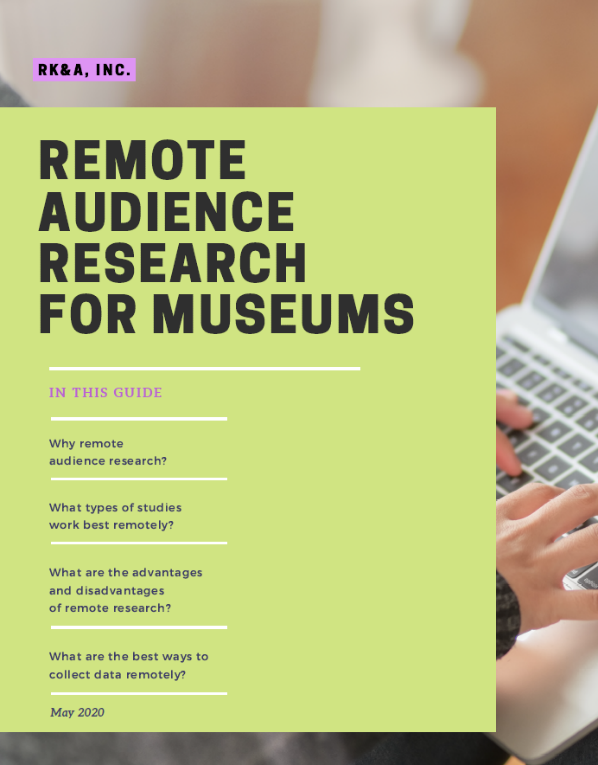This is an Eval Central archive copy, find the original at rka-learnwithus.com.
As evaluators, our work depends on being able to gather data on and from museums’ audiences. It probably goes without saying that this has become trickier in a world transformed by a global pandemic. Museums and cultural organizations are temporarily closed, and we anticipate lower visitation (and different visitation patterns) once they reopen. This makes the question of where and how we might connect with study participants especially pertinent. One thing we have been asking ourselves at RK&A is: do we really need to be physically in a museum to collect useful audience data?
The short answer is no. While historically, museums have, for the most part, heard from their audiences through what evaluators call onsite research, a well-designed remote research study can provide just as thoughtful, valid, and reliable findings as one that gathers data from visitors recruited on the museum floor.
As the name suggests, remote research is research conducted offsite (not at a museum), with the researcher and study participants in different physical locations. This may sound strange, new, or maybe even scary if you are used to gathering data from audiences in-person, at the museum. But, stay with me! While it would certainly be easy to dismiss the idea of doing audience research remotely as simply a temporary research solution while we are at home due to COVID-19, there is robust precedent for doing fully remote studies in “normal times.” Many of these examples stem from the user experience (UX) and product development industries, but museum evaluators also collect data remotely when it best fits the needs of a project. For instance, we might contact participants after a program for telephone interviews to hear about their experiences. As long as a museum’s audience research studies are still rigorously designed and ethical research principles are upheld, there is no reason why they cannot be done fully remotely.
In fact, there are many reasons why museums might choose remote audience research as a primary research strategy over onsite research, even after museums begin to reopen. For one, since participants are recruited in advance for a remote study, they come to the table more focused and mentally prepared to provide feedback, which is not typically the case when they are recruited on the busy museum floor. Participating from home also helps people feel more comfortable, and this feeling can ultimately translate into more honest feedback by reducing courtesy bias (when people withhold critiques for fear of offending the museum or researcher), which can be high in an in-person study. Further, remote studies can allow for broader and more diverse voices to be heard than might be possible when recruiting only among visitors in the museum’s building. Of course, there are some disadvantages to doing fully remote studies, including the lack of environmental context from not being physically in the museum and, to some extent, privacy concerns.
Remote audience research is a huge topic and there is a lot to consider when deciding if it is the right approach for you (more than I can possibly fit in this post!). With that in mind, RK&A created a guide to help you understand the rationale behind remote research for museums, what types of studies work best remotely, the advantages and disadvantages of remote research, and the best ways to collect data remotely. Download RK&A’s Guide to Remote Audience Research for Museums.
Shortened link: https://bit.ly/3dnyOG9

The post Remote Audience Research for Museums — Download the Guide! appeared first on RK&A.